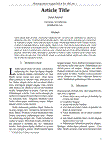| Sumario: | To facilitate our understanding of the interaction of nutrition and reproductive performance from female channel catfish, two experiments were performed in earthen ponds. The first experiment evaluated the interaction of feed quality (42 and 32% protein) and feed frequency (feed offered 3 or 6 times per week) in two strains (high and low spawning strains). The second experiment assessed the influence of different lipid sources and n3:n6 ratios using a commercial catfish feed containing 32% protein and 5% lipid as the basal diet. Reproductive performance in terms of spawning and egg production was not influenced by changing protein level of the diet from 32 to 42%. Increasing the feeding frequency from 3 to 6 times per week negatively affected spawning in one of the strains, but did not affect egg production. Age and period of spawning affected reproductive performance. In addition to having bigger eggs than their younger counterpart, older fish performed better than younger fish in terms of spawning success, and egg production. Biochemical composition of the eggs was affected significantly by dietary treatment in terms of lipid, fatty acids and free amino acid content.Lipid supplementation on a 32% protein, 5% lipid commercial catfish diet using soybean and /or, linseed oil, or menhaden fish oil enriched with docosahexaenoic acid (DHA) and arachidonic acid (ARA) had no significant effects (p<0.05) on spawning success neither egg production. The quantity of fry produced per female body weight and fry survival from fish fed top-coated feed with menhaden fish oil enriched ARA and DHA were two to five fold greater than those obtained from fish fed with feed supplemented with vegetable oils.
|
|---|
